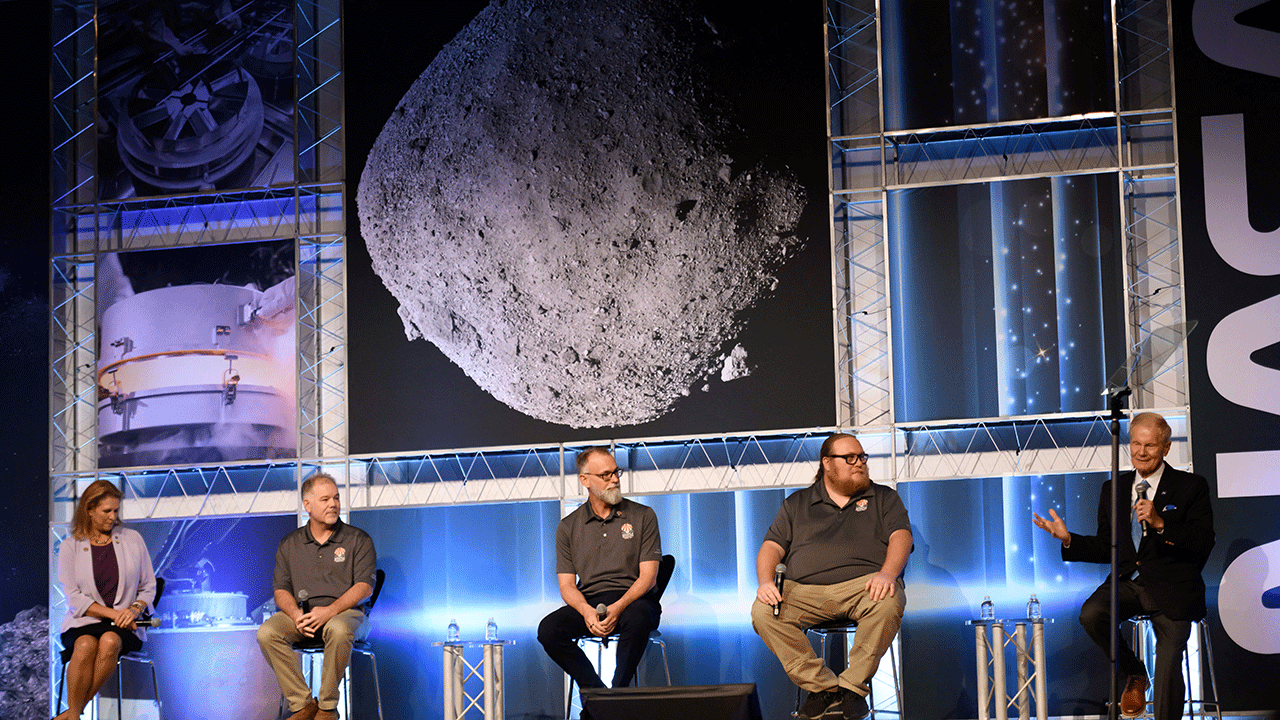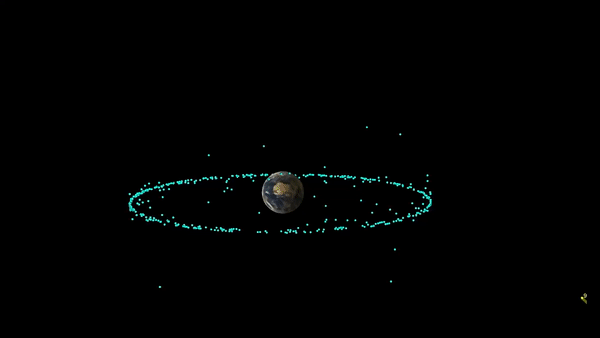How astronauts on the ISS are tackling the latest ‘unexpected challenges’
Coolant leaks, space debris collisions and unplanned engine thrusts are just some of the unexpected challenges astronauts aboard the International Space Station must overcome.
Fresh off its historic mission to collect samples from an asteroid in deep space, NASA's OSIRIS-REx spacecraft has its newest assignment: studying another asteroid during its close encounter with Earth.
OSIRIS-REx ended its seven-year, 4 billion-mile round-trip journey to collect samples from the space rock Bennu in September. But instead of shutting down the craft, the team proposed sending it on a second mission to the asteroid Apophis, expected to pass closer to Earth in 2029 than any other similarly-sized asteroid in recorded history.
They're renaming the spacecraft OSIRIS-APEX (Origins, Spectral Interpretation, Resource Identification, and Security – Apophis Explorer).

NASA held an OSIRIS-REx sample unveiling at the Johnson Space Center in Houston, Texas on Oct. 11, 2023. A sample collected from the 4.5-billion-year-old asteroid Bennu contains abundant water and carbon, scientists revealed, offering more evidence for the theory that life on Earth was seeded from outer space. (MARK FELIX/AFP/AFP via Getty Images)
NASA PLANS TO BUILD A SUBDIVISION OF HOMES ON THE MOON, AND IT MAY BE SOONER THAN YOU THINK
"The close approach is a great natural experiment," Dani Mendoza DellaGiustina, principal investigator for OSIRIS-APEX, said in a NASA press release last week. "We know that tidal forces and the accumulation of rubble pile material are foundational processes that could play a role in planet formation. They could inform how we got from debris in the early solar system to full-blown planets."
Apophis is a more than 1,000-foot-wide space rock named for an Egyptian deity and nicknamed the "God of Chaos."
The asteroid, first discovered in 2004, is expected to pass within 20,000 miles of Earth's surface — nearer than some satellites — on April 13, 2029.

The asteroid Apophis is expected to pass within 20,000 miles of Earth's surface on April 13, 2029, in a historically close encounter. (NASA Jet Propulsion Laboratory/YouTube)
Asteroids of that size pass Earth this closely only once every 7,500 years, according to scientific estimates. Scientists originally said there was about a 3% chance the asteroid would collide with Earth, but over the years they realized there would be no collision in 2029, nor during Apophis' return trip in 2036.
The near brush with Earth will alter the asteroid's orbit and the length of its day — normally 30.6 hours. It could also produce quakes and landslides on Apophis, which could then expose material that lies beneath the asteroid's surface.
HOW NASA JUST MADE HISTORY USING A CAT VIDEO
"OSIRIS-APEX will study Apophis immediately after such a pass, allowing us to see how its surface changes by interacting with Earth’s gravity," Amy Simon, the mission’s project scientist, said in the NASA press release.
OSIRIS-APEX’s cameras will start taking pictures of the asteroid about two weeks before it passes Earth. It will then arrive at Apophis on April 13, 2029, and stay with it for the next year and a half studying any changes caused by the close encounter.
But unlike its trip to Bennu, OSIRIS-APEX won't make contact with Apophis. Instead, the spacecraft will drop within 16 feet of the asteroid's surface and fire its thrusters to stir up rocks and dust, offering scientists a glimpse of what lies beneath.

Engineers perform preliminary checks on the sample return capsule from NASA's OSIRIS-REx mission shortly after it landed on Sept. 24, 2023, at the Department of Defense's Utah Test and Training Range in Dugway, Utah. The sample was collected from the asteroid Bennu in October 2020 by NASA's OSIRIS-REx spacecraft. (Photo by Keegan Barber/NASA via Getty Images)
CLICK HERE TO GET THE FOX NEWS APP
NASA is optimistic that surprising discoveries lie ahead.
"We learned a lot at Bennu, but now we’re armed with even more questions for our next target," Simon said in the press release.


